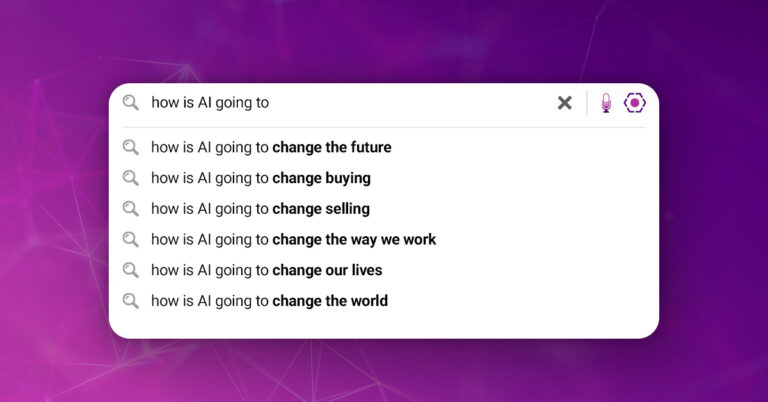Every year, I write a message about what I see as the most important factors for B2B marketers to pay attention to in the year ahead. This year, when I looked back at these messages from the last few years, I saw an obvious trend.
Change has been a constant. And we’ve met it head-on with our enormous capacity to adapt and evolve.
What the world has been through over the last three years was previously unimaginable. What’s different for 2024 is that we now recognize this mode is not temporary. Change is the new normal, and being adaptable is the key for driving ongoing, sustainable growth.
Here are three ways B2B marketing organizations can build their capacity to adapt to change.
1. Make a plan. And assume your plan will change.
We may not be able to predict exactly what will happen in the market and the world in the next year, but whatever happens, you will still be on the hook for growth. When the unexpected happens, you need to be prepared to pivot quickly and keep moving. It may sound trite, but the first thing you can do is expect the unexpected.
As you plan your go to market strategy around the factors that exist today, consider other scenarios and how your organization will respond if they come up:
- What shifts will you have to make if your marketing or sales team shrinks dramatically?
- How will you reach buyers if your primary lead gen channel dries up?
- How will you make sure you can efficiently discover and connect with buyers if your primary means of visibility into buyer behavior goes away?
- Do you have structures and processes in place to anticipate hurdles before they happen, and move quickly once they do?
Building the muscle of anticipating, planning for and adapting rapidly to change takes time. It needs to be supported by your organizational structure and technology platforms. But it starts with your mindset.
2. Move from AI experimentation to proofs of concept.
Almost one year into the AI explosion, we have a lot of great experimentation under our belts. For 2024, the imperative will be to take what we’ve learned from those tests and develop proofs of concept for the most effective ways to use AI across the organization, and then build those steps into our workflows so we can consistently reap the benefits.
One of the keys here will be to think innovatively—beyond “I can use this tool to help me write emails faster”—about the ways it can reduce friction to create better work with less, not just more with less. One of my personal favorite uses of AI right now is as a cross-functional translator—helping me communicate my ideas better to my colleagues in other parts of the organization.
Here are some of things we’re doing at Iron Horse to make this happen:
- Tapping our in-house Innovation Lab to develop custom AI tools to provide better customer experiences and improve efficiency for better ROI.
- Hosting training sessions and having an AI Slack channel to help all team members and our customers understand how tools like ChatGPT, Perplexity, and Copy.ai work and how to fine-tune your instructions to get better results.
- Going beyond sharing use cases to create collections of actual prompts—and follow-up prompts—that team members are using every week, or even every day.
- Developing and regularly communicating guidelines for AI use. AI is far from perfect. It’s essential to have clear guard rails to maintain the highest level of accuracy, privacy and security when using AI.
3. Get radical about collaboration.
We’ve been talking about marketing and sales alignment for 20 years, but we’ve really started to see momentum pick up around team alignment in the last 18–24 months. This is indicative of the time it takes for change—especially one that requires teams to radically shift their mindset, their structure, their goals and how they measure them. But it also speaks to the need for this change, in this environment, right now.
There’s no way to be agile if your teams are not unified around a single goal: driving revenue together. As new challenges present themselves, it’s not just Marketing or Sales that needs to make a shift to adapt to them, but the entire organization together, or you risk your well-orchestrated programs breaking in the middle, with opportunities left dangling while each team runs off on a different track.
But there is something else that is important here. As much as I embrace the move toward AI, we have also seen firsthand the detrimental effects of over-automation in marketing and sales. Leaning into a one-team mentality also helps ensure you’re centering your buyer. Not just an abstract entity, but the humans on the other side of your marketing and sales efforts, the real people who want and need to buy your solutions because they make their lives better.
If these ideas resonate, check out my recent conversation with my colleague, Iron Horse Chief Growth Officer Monica Behncke, on the Iron Horse Coffee Break, 3 Things That Will Change the Way You Market This Year, where we talk more about how to drive agility in your organization in 2024.



